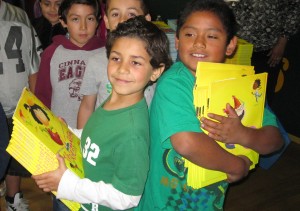Here’s what I find surprising – when I hear seasoned authors start with these words, “I didn’t know until they sent me the schedule . . . “ The sentence is completed in any number of ways: “. . . that the host didn’t schedule lunch” “. . .has me addressing Pre-Ks and I write middle grade” “. . . cut my 60-minute presentation to 30 minutes.”
The solution to these scheduling surprises, of course, is to work out the kinks ahead of time.
While we all try make accommodations for special situations, you are the expert on determining the best flow for your day. Your goal is to deliver the greatest educational value to kids through your presentations. But scheduling can be challenging for schools. They often have to rearrange recess and juggle classes to adjust for an author visit. So why not help them out?
I work out scheduling details at least two weeks before a visit. I send a Sample Schedule for the school to use as a guide and ask to review it before it is published for the staff.
The schedule includes the time needed for each assembly (Primary, Intermediate, Middle) or workshop, and even the transition time needed to reset my props between sessions or to travel to a workshop location on campus. I’m flexible on time needed for lunch.
A few years ago, I also learned to stand firm on one thing: the order of events in my day at the school. Why? The turning point came when I was in a school of over 1,000 children, all PreK to Grade2. The host scheduled all the Kindergartners for the last period in the afternoon. It’s not a leap to picture the outcome! I now require that my elementary school assemblies are held in the morning.
Get your schedule in writing ahead of your visit. And don’t be timid about speaking up to make adjustments. In the end, the students are the ones benefitting from a schedule that flows and an author who can perform at the top of their game.



